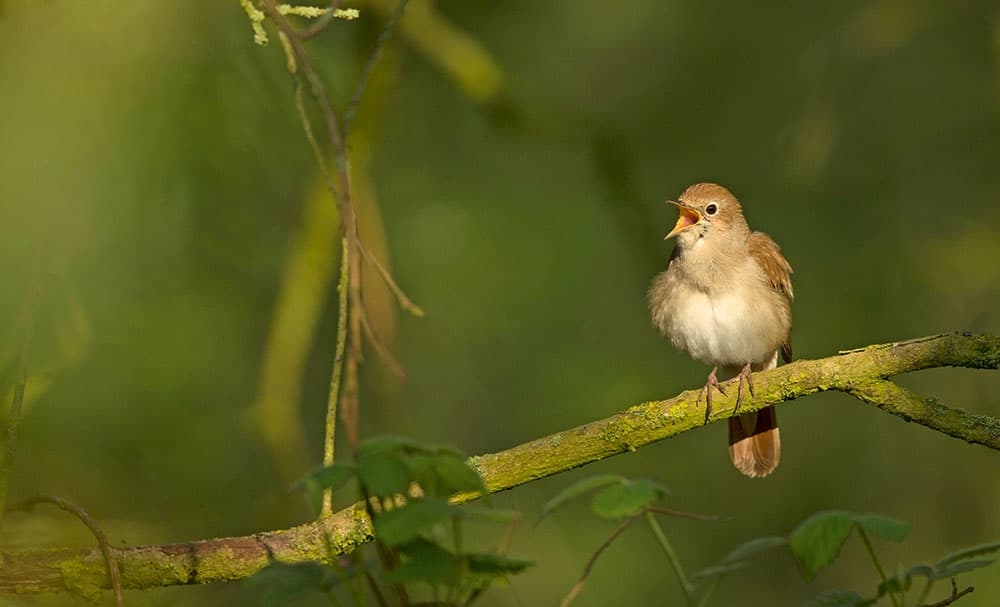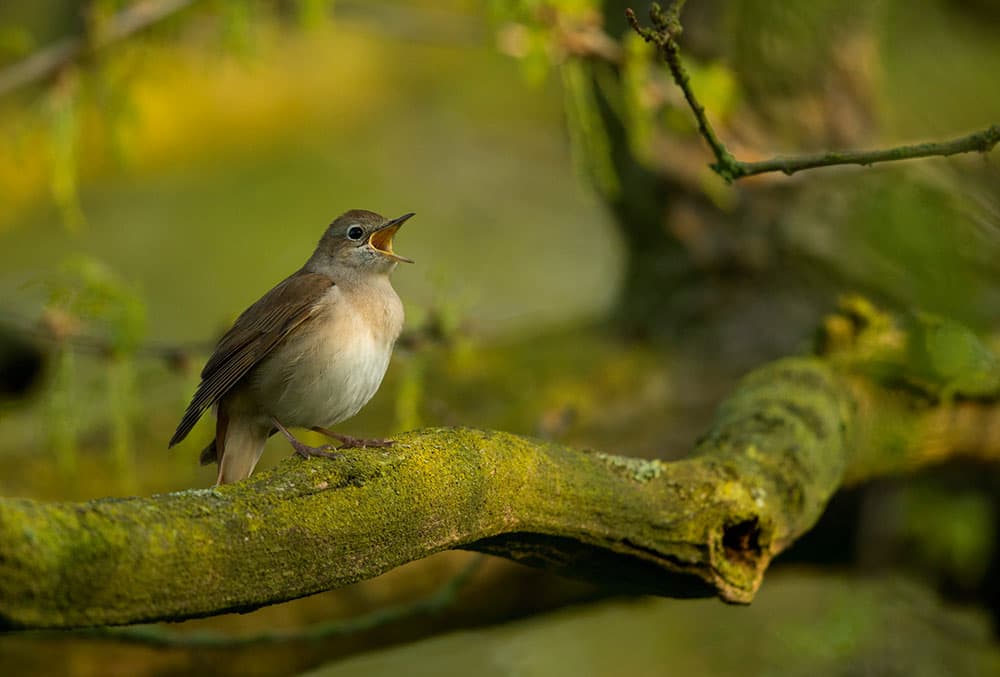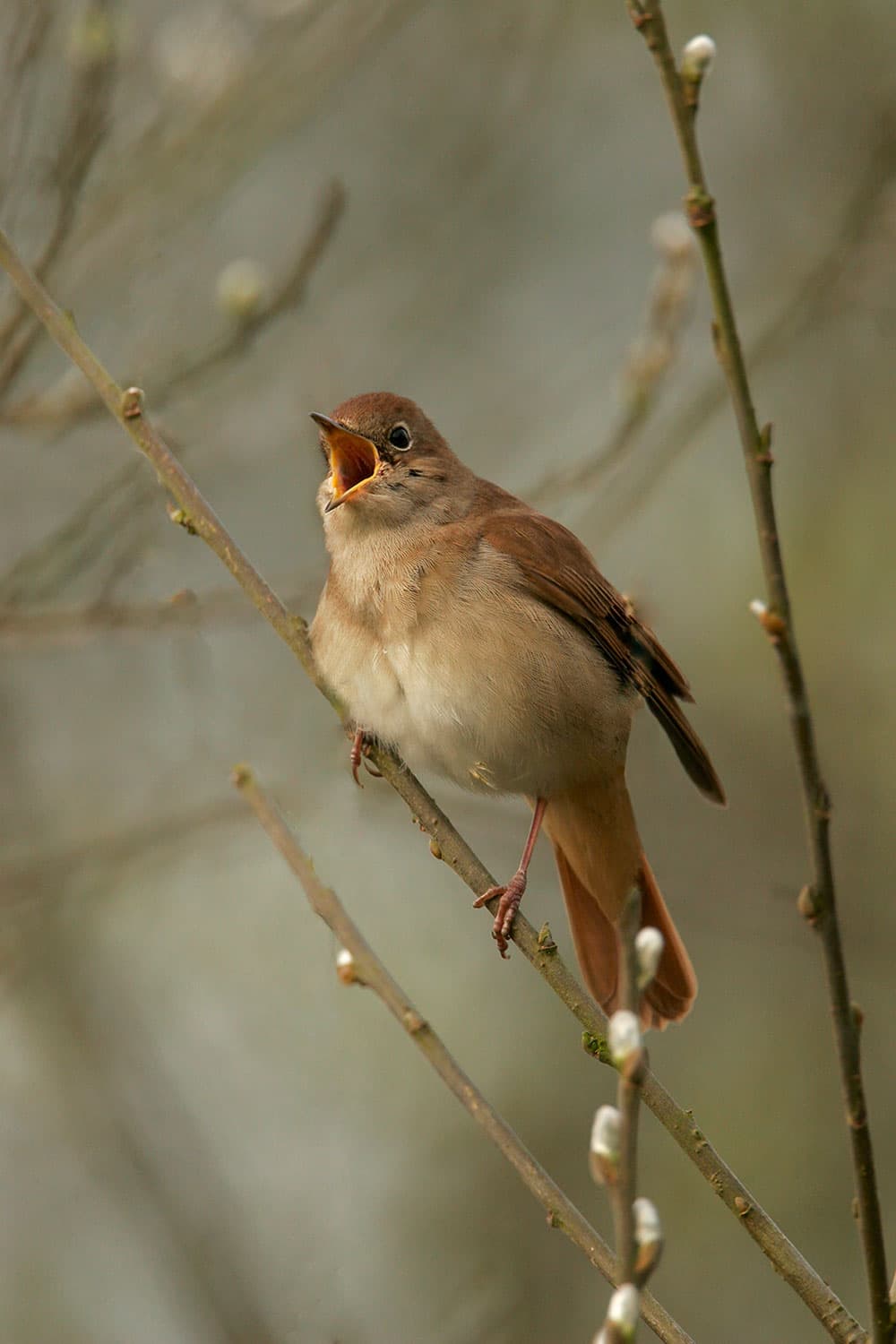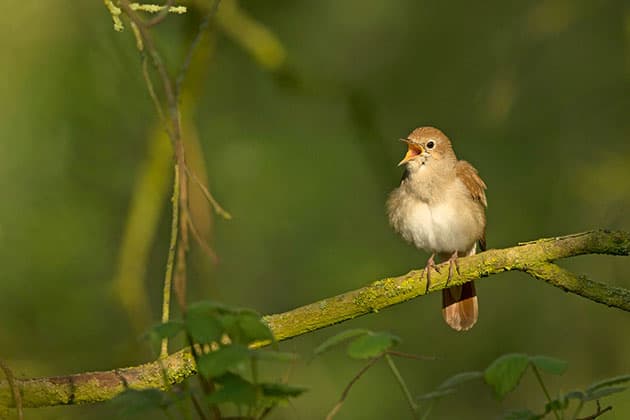
This was a tricky one to expose for because of the contrast between the warm sunlight and the darker woodland behind. Canon EOS-1D X, 700mm, 1/1250sec at f/5.6, ISO 800. Credit: Paul Hobson
About the nightingale
Nightingales are migratory birds arriving in Britain around mid-April. Males tend to arrive 10 days before females and seek out scrubby woodland.
- Location Southeast England dominantly. Essex, Suffolk, Norfolk and Kent hold about 70% of the UK’s population.
- Size 15-17cm long, wingspan of 23-26cm.
- Nest A secretive bird, nightingales like to build nests in undergrowth among dense shrubbery out of dead leaves and grasses.
- Diet Nightingales mainly feed off insects found on the ground and will eat berries in the autumn.
- Population 6,700 breeding pairs in the UK.
As night gives way to the encroaching dawn the still, cool air is punctured by loud, liquid notes. It is loud. Much louder than you would expect, the nightingale’s sound is also arguably the most beautiful of all British songsters.
Nightingales prefer tangled woodland, particularly coppiced areas with a good scrub layer. The birds are never easy to see because they love nothing better than skulking through the vegetation. The male and female look virtually the same, are slightly bigger than robins, and are a rather non-descript brown with a pale breast. Unfortunately many suitable-looking woods won’t hold nightingales so the best way to locate them is to visit a well-known reserve which has a strong population of the birds. The Discover Wildlife website is a good place to start.
The easiest way to locate the birds is to arrive an hour before dawn and walk the paths of your chosen woodland. Never stray from the paths as you can disturb the birds by trampling the vegetation. The key is to use your ears to locate nightingales, not your eyes. Stand still and listen. The male’s song is loud and carries quite a distance. If you are not sure what to listen for, learn the song by playing it on your computer – a number of websites have recordings. Once you have located a singing male make your way slowly and quietly to the area he is singing from and wait until the light levels allow you to see more clearly.

If the light is dull, set the white balance to 6400K to warm it up. Canon EOS-1D X, 500mm, 1/1250sec at f/5.6, ISO 1600. Credit: Paul Hobson
Shooting advice
The best time to photograph a singing male is roughly the last 10 days of April, before the female joins him. He will now be singing louder, longer and on more prominent perches in his territory. He will start singing before dawn and carry on intermittently for a few hours after the sun rises, so this is the key time to photograph.
You will be shooting from a public path and the birds will be able to see you and probably be used to bird watchers and walkers. However, it is best to dress in drab browns or greens, speak in hushed tones and move quietly and slowly.
The best lens is your longest. I would keep camera body and lens on a tripod to stabilise the lens. Male nightingales sing with their beak held wide open for a few seconds at a time. You will need to use a fairly high speed (at least 1/500sec) to freeze the motion of the beak. I suggest using a low aperture, around f/4 or f/5.6, to blur the background slightly, and use the ISO to get the correct speed. Exposure is always difficult because you will be firing into woodland. What you are hoping for is the male to sing from a prominent perch. It does no harm to trial a few exposures before he arrives to judge whether you need any exposure compensation.

Think about your position, to minimise background distractions such as branches. Canon EOS 20D, 700mm, 1/500sec at f/5.6, ISO 400. Credit: Paul Hobson
Kit list
- Lens Your biggest lens, perhaps a 500mm, is ideal with a full-frame camera. If you have a cropped sensor camera and can add a 1.4x converter, then a 100-400mm or even a 300mm with a 2x converter would be fine.
- Tripod head Either use a ball and socket or a gimbal so you can quickly move the lens in all three planes. A pan head and tilt is too cumbersome when you don’t know from where the bird will pop up.
- Tripod Often you will be shooting at eye height on a path. Handholding the camera for an hour or two will give you arm pain, so a tripod is essential.







